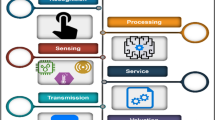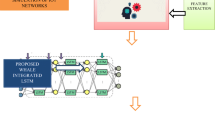Abstract
An Internet of Things (IoT) network is characterized by ad-hoc connectivity and varying traffic patterns where the routing topology evolves over time to account for mobility. In an IoT network, there can be an overwhelming number of massively connected devices, all of which must be able to communicate to each other with low latency to provide a positive user experience. Various protocols exist to allow for this connectivity, and are vulnerable to attack due to their simple nature. These attacks seek to disrupt or deny communications in the network by taking advantage of these vulnerabilities. These attacks include Blackhole, Grayhole, Flooding and Scheduling attacks. Intrusion Detection Systems (IDS) to prevent these routing attacks exist, and have begun to incorporate Deep Learning (DL) to bring near perfect accuracy of detection of attackers. The DL approach opens up the IDS to the possibility of being the victim of an Adversarial Machine Learning attack. We explore the case of a novel evasion attack applied to a Wireless Sensor Network (WSN) dataset for subversion of the IDS. Additionally, we explore possible mitigations for the proposed evasion attack, through adversarial example training, outlier detection, and a combination of the two. By using the combination, we are able to reduce the possible attack space by nearly two orders of magnitude.
Access this chapter
Tax calculation will be finalised at checkout
Purchases are for personal use only
Similar content being viewed by others
References
Almomani, I., Al-Kasasbeh, B., Al-Akhras, M.: Wsn-ds: a dataset for intrusion detection systems in wireless sensor networks. J. Sens. 2016 (2016)
Chen, L., Ye, Y., Bourlai, T.: Adversarial machine learning in malware detection: arms race between evasion attack and defense. In: 2017 European Intelligence and Security Informatics Conference (EISIC), pp. 99–106. IEEE (2017)
Goodfellow, I.J., Shlens, J., Szegedy, C.: Explaining and harnessing adversarial examples. arXiv preprint arXiv:1412.6572 (2014)
Grosse, K., Manoharan, P., Papernot, N., Backes, M., McDaniel, P.: On the (statistical) detection of adversarial examples. arXiv preprint arXiv:1702.06280 (2017)
Huang, Y., Verma, U., Fralick, C., Infantec-Lopez, G., Kumar, B., Woodward, C.: Malware evasion attack and defense. In: 2019 49th Annual IEEE/IFIP International Conference on Dependable Systems and Networks Workshops (DSN-W), pp. 34–38. IEEE (2019)
Jiang, W., Li, H., Liu, S., Luo, X., Lu, R.: Poisoning and evasion attacks against deep learning algorithms in autonomous vehicles. IEEE Trans. Veh. Technol. 69(4), 4439–4449 (2020)
Kolosnjaji, B., et al.: Adversarial malware binaries: evading deep learning for malware detection in executables. In: 2018 26th European signal processing conference (EUSIPCO), pp. 533–537. IEEE (2018)
Korba, A.A., Nafaa, M., Salim, G.: Survey of routing attacks and countermeasures in mobile ad hoc networks. In: 2013 UKSim 15th Int’l Conference on Computer Modelling & Simulation, pp. 693–698. IEEE (2013)
Kurakin, A., Goodfellow, I., Bengio, S.: Adversarial machine learning at scale. arXiv preprint arXiv:1611.01236 (2016)
Madry, A., Makelov, A., Schmidt, L., Tsipras, D., Vladu, A.: Towards deep learning models resistant to adversarial attacks. arXiv preprint arXiv:1706.06083 (2017)
Nadeem, A., Howarth, M.P.: A survey of manet intrusion detection & prevention approaches for network layer attacks. IEEE Commun. Surv. Tutor. 15(4), 2027–2045 (2013)
Nguyen, S.N., Nguyen, V.Q., Choi, J., Kim, K.: Design and implementation of intrusion detection system using convolutional neural network for dos detection. In: Proceedings of the 2nd International Conference on Machine Learning and Soft Computing, pp. 34–38 (2018)
Otoum, S., Kantarci, B., Mouftah, H.T.: On the feasibility of deep learning in sensor network intrusion detection. IEEE Netw. Lett. 1(2), 68–71 (2019)
Papernot, N., et al.: Technical report on the cleverhans v2.1.0 adversarial examples library. arXiv preprint arXiv:1610.00768 (2018)
Premkumar, M., Sundararajan, T.: Dldm: deep learning-based defense mechanism for denial of service attacks in wireless sensor networks. Microprocess. Microsyst. 79, 103278 (2020)
Shi, Y., Sagduyu, Y.E.: Evasion and causative attacks with adversarial deep learning. In: MILCOM 2017–2017 IEEE Military Communications Conference (MILCOM), pp. 243–248. IEEE (2017)
Wong, E., Rice, L., Kolter, J.Z.: Fast is better than free: Revisiting adversarial training. arXiv preprint arXiv:2001.03994 (2020)
Xu, G., Li, H., Ren, H., Yang, K., Deng, R.H.: Data security issues in deep learning: attacks, countermeasures, and opportunities. IEEE Commun. Mag. 57(11), 116–122 (2019)
Xu, W., Evans, D., Qi, Y.: Feature squeezing: detecting adversarial examples in deep neural networks. arXiv preprint arXiv:1704.01155 (2017)
Yuan, X., He, P., Zhu, Q., Li, X.: Adversarial examples: attacks and defenses for deep learning. IEEE Trans. Neural Netw. Learn. Syst. 30(9), 2805–2824 (2019)
Author information
Authors and Affiliations
Corresponding author
Editor information
Editors and Affiliations
Rights and permissions
Copyright information
© 2022 Springer Nature Switzerland AG
About this paper
Cite this paper
Lurski, N., Younis, M. (2022). Application and Mitigation of the Evasion Attack against a Deep Learning Based IDS for IoT. In: Renault, É., Boumerdassi, S., Mühlethaler, P. (eds) Machine Learning for Networking. MLN 2021. Lecture Notes in Computer Science, vol 13175. Springer, Cham. https://doi.org/10.1007/978-3-030-98978-1_6
Download citation
DOI: https://doi.org/10.1007/978-3-030-98978-1_6
Published:
Publisher Name: Springer, Cham
Print ISBN: 978-3-030-98977-4
Online ISBN: 978-3-030-98978-1
eBook Packages: Computer ScienceComputer Science (R0)




